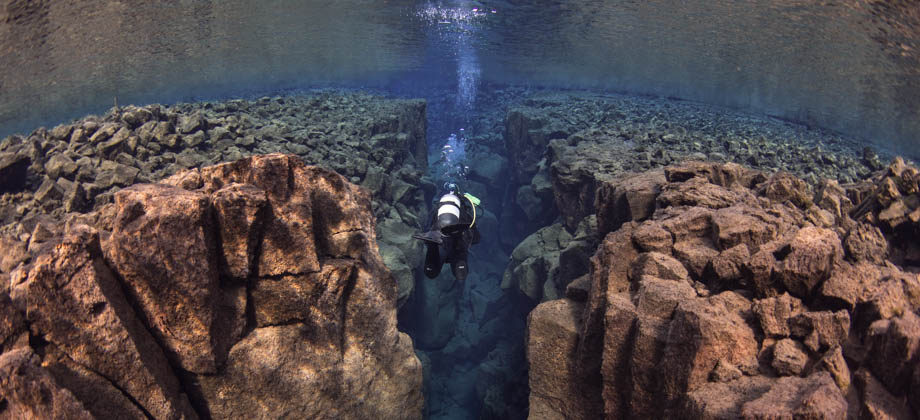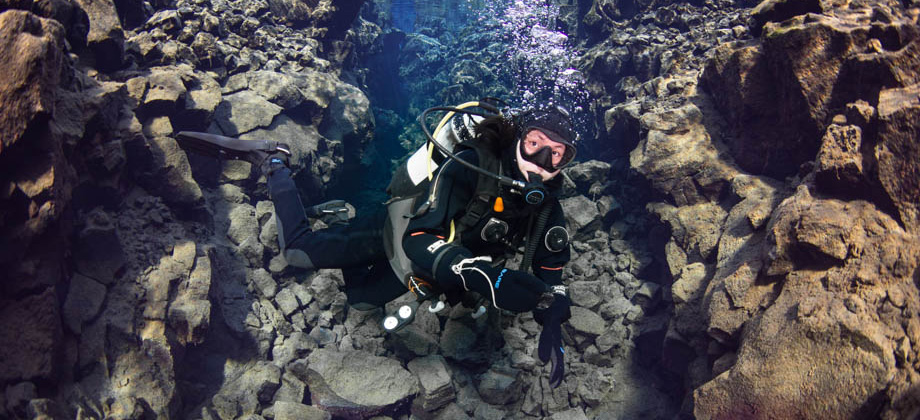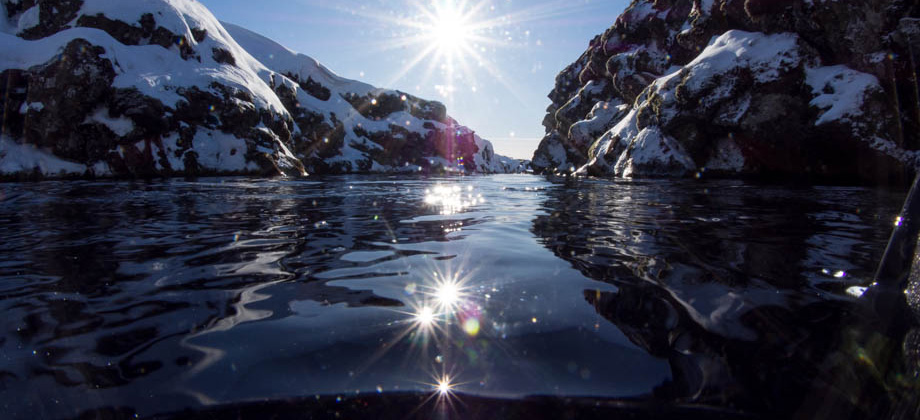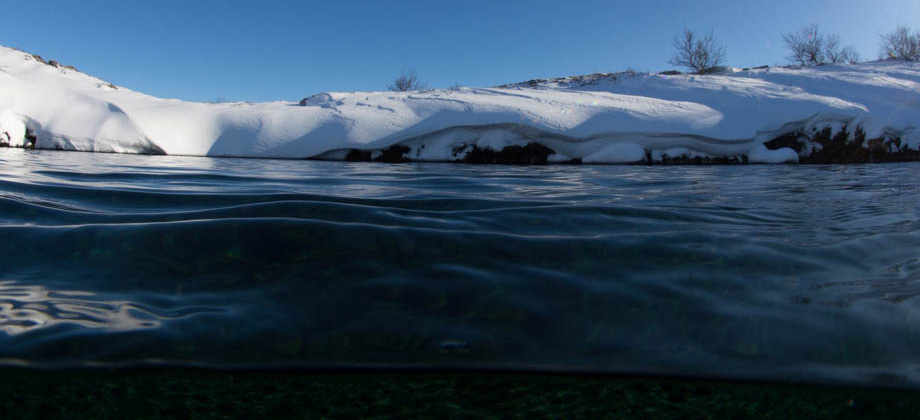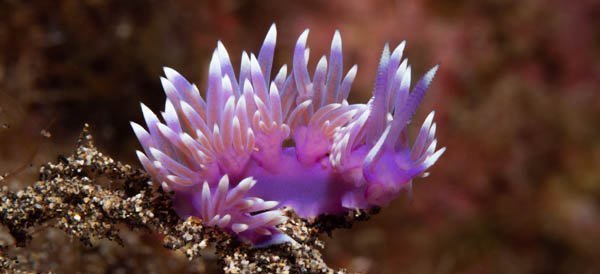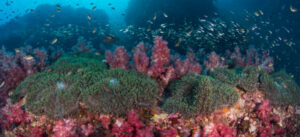Silfra Fissure
Silfra Fissure
PROTECTED STATUS :

Silfra Fissure

is known to scuba divers the world over for the incredible visibility of its glacial meltwater. The fissure, like Nesgjá

in the north of Iceland, is located on the tectonic plate boundary of the Mid-Atlantic Ridge. Silfra is also a site that can be accessed throughout the year, as the temperature of the water does not fluctuate by much and remains between 2 to 4 °C. During winter, snow-cover in Iceland is usually quite heavy, and
hiking paths are closed off for safety. This makes Silfra a perfect winter option for those who are in search of outdoor activities.
The only way to dive the Silfra Fissure is to join a tour from one of the many dive operators in Iceland. The tours that they provide include a divemaster as well as all the gear that will be required for cold water diving, such as a drysuit and a thermal undersuit. The tours can also include a pick-up from (relatively close) Reykjavík, but since the park is located along the Golden Circle route, driving there yourself in a rented car is probably the more exciting and adventurous option. The only dive operator that operates in winter is
dive.is, and they also happen to be the longest running dive and snorkel company in the whole of
Iceland. If you do not happen to meet the requirements to dive Silfra,
dive.is also provides drysuit speciality courses at an additional cost.
Requirements:
- You must be a qualified diver with a certification in a drysuit speciality; OR
- You must be a qualified diver with at least 10 logged dives in a drysuit conducted over the past two years, signed by an instructor or divemaster.
 Mount Esja seen across the Faxaflói from Reykjavík during sunset
Mount Esja seen across the Faxaflói from Reykjavík during sunset
Nearest Hyperbaric Chamber
Lanspítali Fossvogi
214 E-2 Háþrystilaekningar
National Hospital & Emergency Room
Fossvogur 108
Reykjavik, Iceland
Telephone: +354 5431007
Þingvellir National Park
Silfra Fissure is located in Þingvellir National Park

(
Anglicised: Thingvellir), a UNESCO World Heritage Site that was designated in 2004 based on cultural criteria. This is because the park is the historical meeting place of the Viking Age commonwealth parliament, referred to as Althingi

. There has been ongoing discussion about a possible "serial trans-boundary nomination" for the Mid-Atlantic Ridge, however, so the park may fulfill the geological criteria at some point in the future. If that happens, Þingvellir National Park would be considered a 'mixed' site and would then be included amongst the
Natural World Heritage Sites.
The park encompasses Lake Thingvalla (
Icelandic: Thingvallavatn), which, at 14-kilometres long and covering an area of 84 square kilometres, is the largest natural lake in
Iceland. Only ten percent of the lake's water comes from surface water such as rivers and brooks, whereas the rest of the water originates from springs and fissures on both the bed and the shore of the lake. The underwater catchment area of these springs and fissures extends as far as Langjökull glacier

, which is located more than 50 kilometres away.
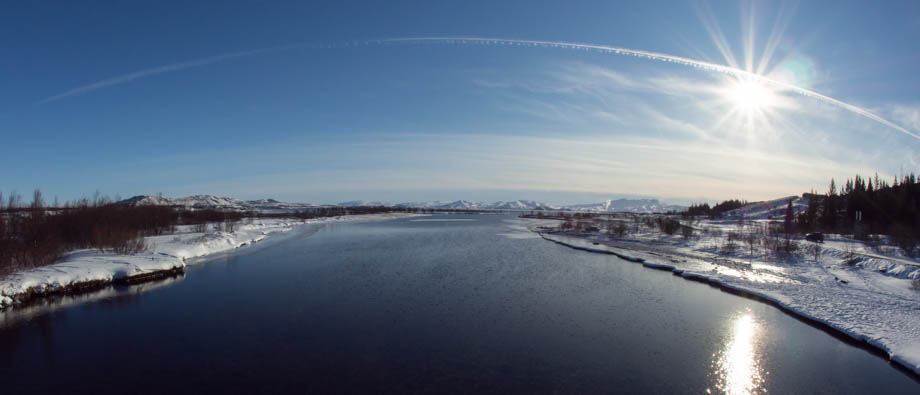 The inlet along the northern shore of Lake Thingvalla
The inlet along the northern shore of Lake Thingvalla
Getting There
Þingvellir National Park lies just under an hour away from the capital city, Reykjavík. Driving in Icelandic conditions, especially in winter, is probably something that most people around the world have never experienced before. Snowbanks along the roads are high and snowdrifts sometimes cause the roads to completely disappear. Make sure to check that the roads are still open and to drive very carefully.
To get to the park, you drive along the first section of the Golden Circle route (clockwise) by first taking the Miklabraut to route 1 towards Mosfellsbær. From there, you enter route 36 (Þingvallavegur) which brings you straight to Þingvellir National Park. The entrance to the park is free of charge, but the parking fee  is not. The parking fee is Kr750 per day, and it can conveniently be paid online.
is not. The parking fee is Kr750 per day, and it can conveniently be paid online.
The route from Reykjavík city to Þingvellir National Park
Öxarárfoss waterfall
One of the rivers that flows into Lake Thingvalla is Öxará river. The river meanders towards Þingvellir from another lake called Myrkavatn in the north, and forms a waterfall called Öxarárfoss where the river meets the Almannagjá gorge, which is essentially the eastern edge of the North American tectonic plate. Öxarárfoss, which literally means 'Waterfall in the Ax River', turns out to be a human-made waterfall, as evidence indicates that Öxará river was diverted in the ninth century to channel the water into the gorge in order to create a source of water for the Althingi.
Öxarárfoss

can be reached by a short hike along Almannagjá gorge either from the park (the waterfall is not too far from the Silfra fissure itself), or from a path that can be reached from a turnoff

from Þingvallavegur road. For fans of the TV series '
Game of Thrones', this path is also the way into the
inpregnable Eyrie!
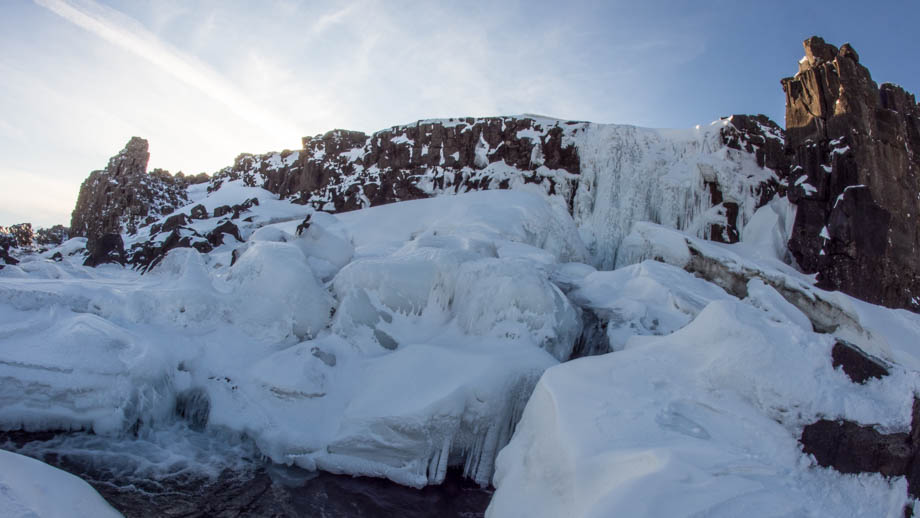 Öxarárfoss waterfall, completely frozen, flowing over Almannagjá gorge
Öxarárfoss waterfall, completely frozen, flowing over Almannagjá gorge
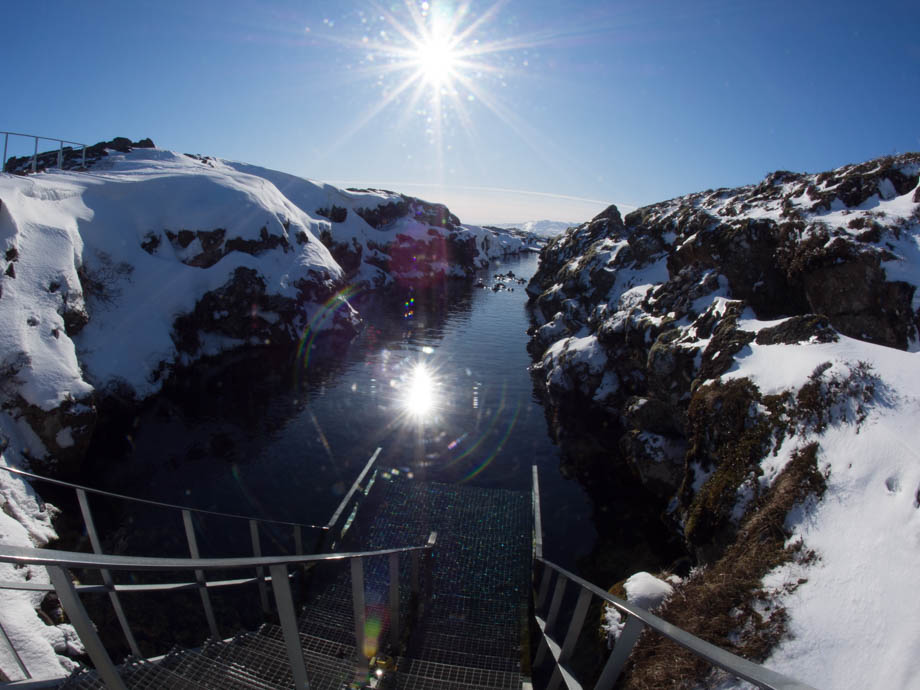 The stairwell that descends into the Silfra fissure
The stairwell that descends into the Silfra fissure
 Silfra Fissure
Silfra Fissure 

![]() is not. The parking fee is Kr750 per day, and it can conveniently be paid online.
is not. The parking fee is Kr750 per day, and it can conveniently be paid online.


